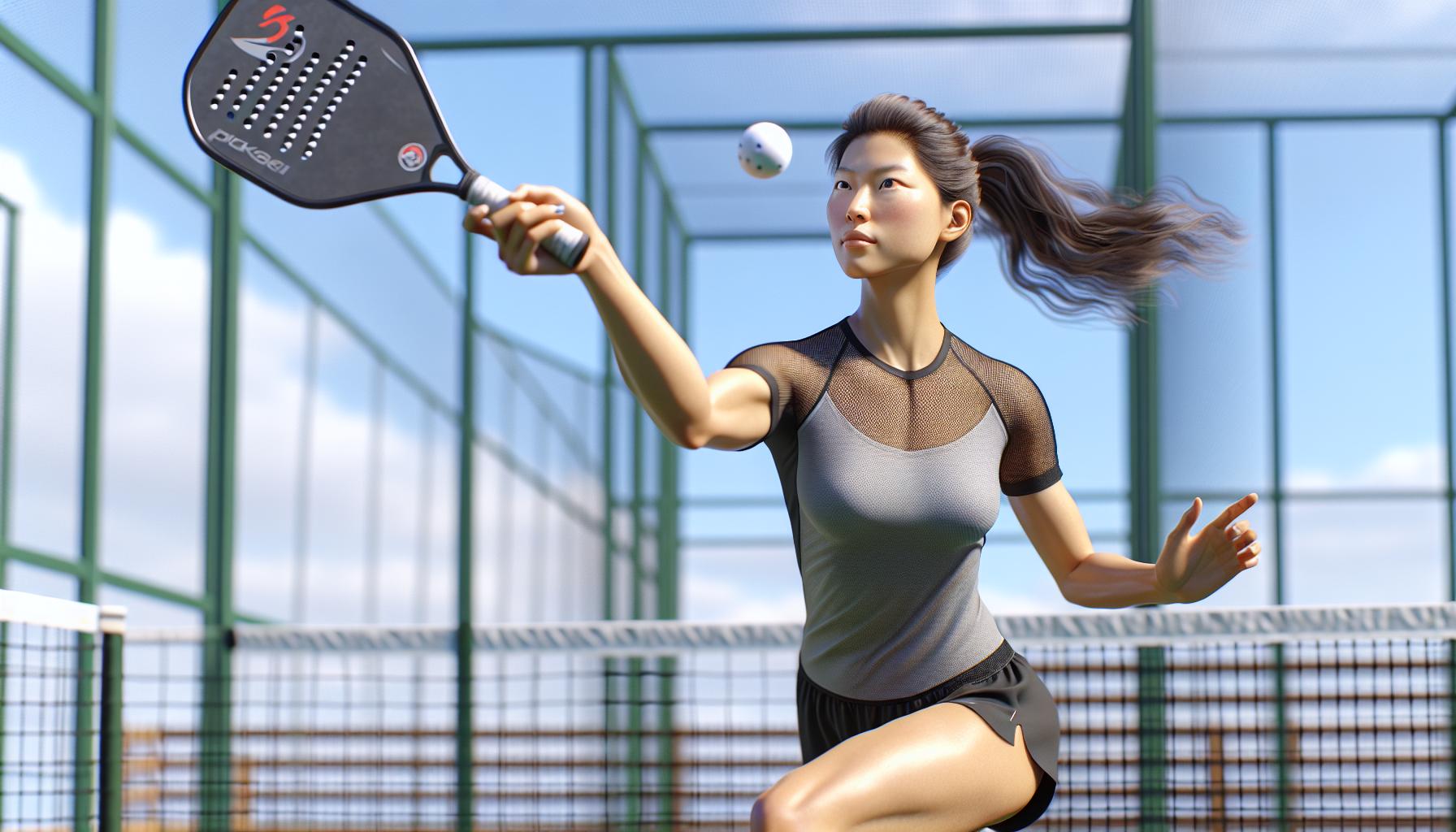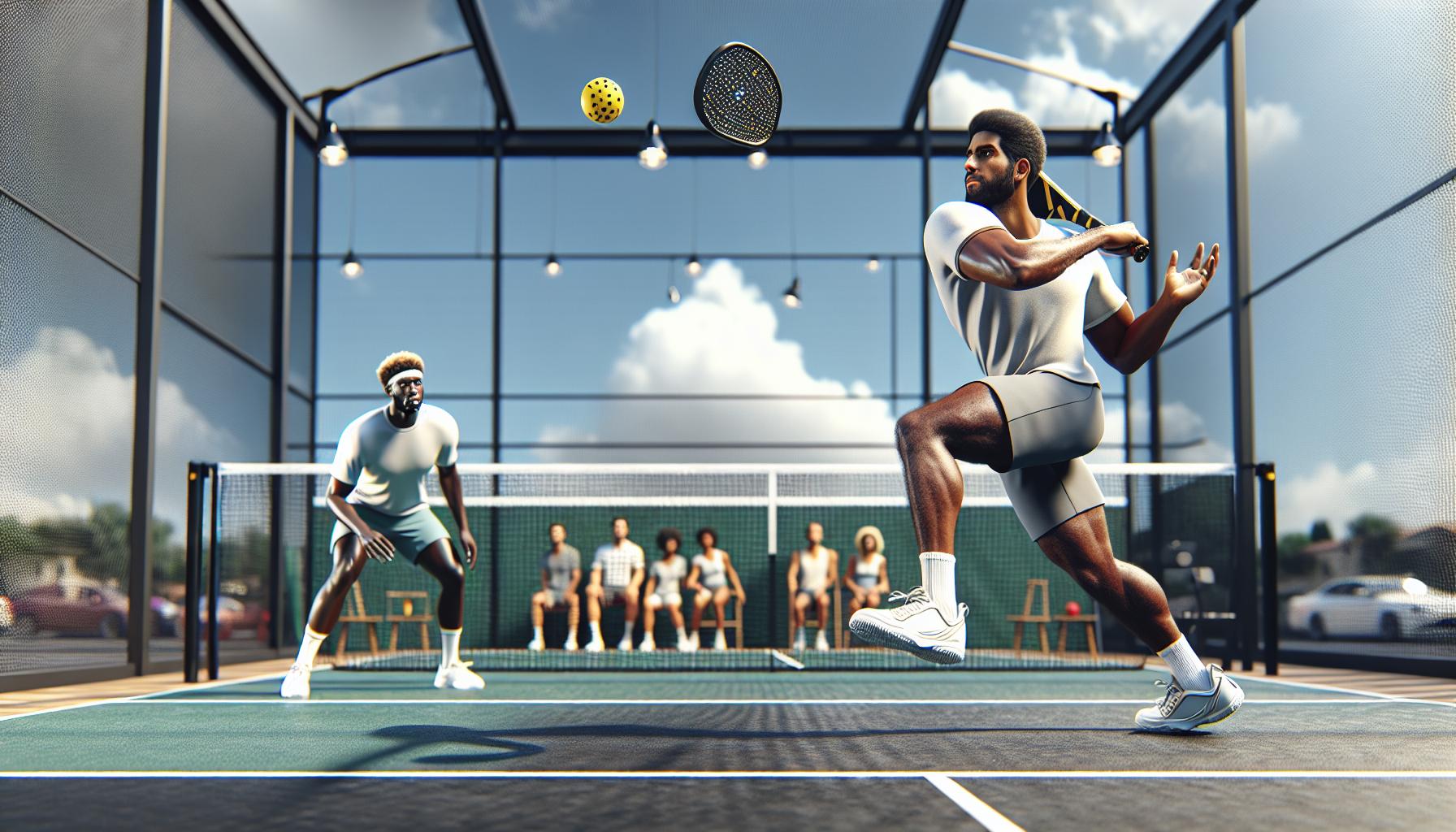Pickleball’s gaining momentum, and with its rise, mastering the art of the lob shot has become a game-changer. It’s not just about hitting the ball; it’s about strategic placement, timing, and the element of surprise. Whether you’re a beginner or looking to up your game, understanding when and how to execute a perfect lob shot can put you steps ahead of your competition.
Lob shots in pickleball can turn the tide of any match, but they’re often misunderstood and underutilized. Knowing the right moment to lob can catch your opponents off guard, giving you that much-needed edge. Let’s dive into the techniques that make a successful lob shot and the scenarios where they become your secret weapon on the court.
The Importance of Pickleball Lob Shots
Pickleball, a rapidly growing sport that combines elements of tennis, badminton, and table tennis, requires a variety of shots to play effectively. Among these, the lob shot holds a special place for its strategic importance in both singles and doubles play. Despite its somewhat misunderstood role in the game, mastering the lob shot can significantly elevate a player’s game.
Lob shots in pickleball are not merely about hitting the ball over an opponent’s head. Instead, they’re a nuanced tactic aimed at creating space and time, altering the rhythm of the game, and opening the court for more aggressive shots. When executed correctly, a lob can transition the momentum of the game to the lobbing player’s favor, making it an invaluable tool in the pickleball arsenal.
Strategic Placement and Timing
The success of a lob shot hinges on its placement and timing. The ideal lob arcs high enough to pass over an opponent’s reach but lands within the boundaries of the court. This precision forces opponents to quickly transition from a net position to the baseline, disrupting their stance and potentially leading to a poorly executed return.
Effective lob shots are not just about height and distance; they’re about strategic timing. Catching opponents off guard, especially when they’re closing in on the net, can make the lob an unstoppable force. Similarly, employing the lob when opponents expect a hard-driven ball can disrupt their game plan and rhythm.
Scenarios for Maximum Impact
Understanding the scenarios in which a lob shot can be most effective is crucial. Here are some prime situations:
- When opponents are at the net: Lobbing the ball over aggressive net players can push them back, providing the lobbing team time and space to prepare for the next shot.
- During a fast-paced volley: Slowing down the game with a well-timed lob can give players a breather and reset their strategy.
- To counter a strong serve: Returning a powerful serve with a lob can catch the serving team off balance, turning a defensive move into an offensive opportunity.
Technique for Executing a Perfect Lob Shot

Mastering the lob shot in pickleball involves more than just a swing of the paddle. It’s an art that combines skill, precision, and timing. To execute a perfect lob shot, one must first have a strong foundation in the basics of the shot, then refine their technique to adapt to various game situations.
The first step in executing a perfect lob shot is to ensure the correct grip and stance. Players should hold their paddle with a light, yet firm grip to allow for flexibility in wrist movement. The body’s stance is equally important. They should be balanced and ready to move, with knees slightly bent and feet shoulder-width apart.
Timing is crucial when attempting a lob shot. The ideal moment to strike is when opponents are close to the net or when there’s an opening in the backcourt. The element of surprise works greatly in the player’s favor, making it harder for opponents to recover and respond. Therefore, players must constantly be aware of their opponents’ positions and look for opportunities to exploit their placement on the court.
When hitting the lob, players should aim for a smooth, upward swing, contacting the ball at the lower half to generate the necessary lift. It’s important to aim for depth rather than height to ensure the ball lands at the back of the court, making it difficult for opponents to return with power. The paddle face should be open, and players should follow through with their swing to guide the ball on its intended path.
Practicing different lob techniques is essential for players who wish to incorporate this shot into their repertoire effectively. Drills focusing on both defensive and offensive lobs can help players understand when and how to use this shot strategically. A defensive lob can be a lifesaver when under pressure, giving the player time to reposition and defend the court. In contrast, an offensive lob can disrupt opponents’ rhythm and create scoring opportunities.
To further refine their lob shot, players should consider the following key points:
- Focus on Placement: The aim is to place the ball where the opponents are not, preferably in areas that are hard for them to reach.
- Vary the Speed: Mixing up the speed of the lob shots can keep opponents guessing and off-balance.
- Practise Under Pressure: Simulating match conditions in practice sessions can help players become more comfortable and confident in executing lob shots during critical game moments.
Understanding the Right Moments to Use Lob Shots

In the dynamic world of pickleball, figuring out the perfect timing for a lob shot can significantly enhance a player’s strategic game. Knowing when to use lob shots effectively requires an understanding of both the game’s flow and the positioning of the opponents. The art of deception plays a crucial role in making these shots successful, as unpredictability can be a key ally.
Lob shots are particularly effective when opponents are playing aggressively at the net. This scenario presents an ideal opportunity to use a lob shot to push them back, creating discomfort and disrupting their rhythm. By carefully observing opponents’ positions and readiness, players can exploit moments of overcommitment, launching the ball over their heads and forcing them to retreat hastily.
Another prime moment for utilizing lob shots is during fast-paced volleys. In these instances, the quick exchange of shots can draw players closer to the net, reducing their ability to respond to a well-placed lob. The sudden change of pace and trajectory can catch opponents off guard, buying time and space for the executing team to reset their formation and prepare for the next play.
Countering a strong serve with a lob shot is also a strategic move. When facing a powerful serve, a defensive lob can neutralize the advantage, allowing the receiving team to regain control of the point. This technique requires precision and timing to ensure the lob is neither too short, which could set up the server for a smash, nor too long, which would lead to a fault.
Engaging in situational practice is crucial for mastering the timing and placement of lob shots. By simulating various match scenarios, players can develop an intuitive sense of when to deploy lob shots for maximum effect. This includes practicing under different conditions, such as windy weather, where the lob’s trajectory may be affected, and against a variety of opponent styles.
To sum up, successful lob shots hinge on the ability to read the game and opponents accurately. Players should always be on the lookout for signs that indicate an opportune moment for a lob, such as opponents creeping too close to the net or the team finding themselves under pressure from a fast volley exchange. Consistent practice in these scenarios will not only improve the accuracy of the lob shots but also expand the strategic options available to a player during a match.
Lob Shots as a Secret Weapon on the Court

Lob shots in pickleball often fly under the radar, yet those who master them hold a powerful secret weapon. This tactic isn’t about sheer power or speed; it’s about the art of deception and strategic placement. When a player sends the ball arching over an opponent’s head, it’s not just a matter of getting it to the back of the court. It’s about changing the game’s dynamics, forcing the opponents into unexpected positions, and seizing control.
Lob shots work best when they’re least expected. In the throes of a rapid exchange at the net, a well-placed lob can turn the tide of a rally. It compels opponents to transition from an offensive to a defensive stance in moments, often leading to a scramble to the baseline. This shift not only breaks the opponents’ rhythm but also opens up opportunities for the lobbing team to take a more aggressive position and dictate the pace of the play.
The effectiveness of a lob shot hinges on its execution. A lob too short and your opponents can easily smash it back. Too long, and you risk handing them a comfortable return from the baseline. The goal is to find that sweet spot where the ball barely eludes the outstretched paddles of your opponents, yet lands within the bounds of the court. This requires finesse and a keen understanding of both the court’s dimensions and the opponents’ capabilities.
Practice Makes Perfect
To turn lob shots into a reliable weapon, players must commit to practice. This involves:
- Developing a Soft Touch: Getting the right arc on the ball necessitates a paddle grip that allows for subtlety. Practicing different grips to find what works best for each individual is key.
- Focusing on Footwork: Effective lobs come from not just the arms but the whole body. Positioning, balance, and the ability to move swiftly yet quietly into the right position are critical.
- Reading the Play: Knowing when to lob isn’t just about the shot itself but understanding the flow of the game. Awareness of opponents’ positions, strengths, and weaknesses can pinpoint the perfect moment for a surprise lob.
Conclusion
Mastering the lob shot in pickleball truly can elevate a player’s game, transforming them into a formidable opponent. It’s all about the blend of skill, precision, and strategic thinking. Whether it’s disrupting the flow of the game, creating opportunities for aggressive play, or simply catching opponents off guard, the lob shot is a versatile tool in any player’s arsenal. Remember, practice makes perfect. By focusing on the nuances of timing, placement, and execution, players can turn the lob shot into their secret weapon. So next time you’re on the court, don’t underestimate the power of a well-placed lob. It might just be the game-changer you need.













0 Comments